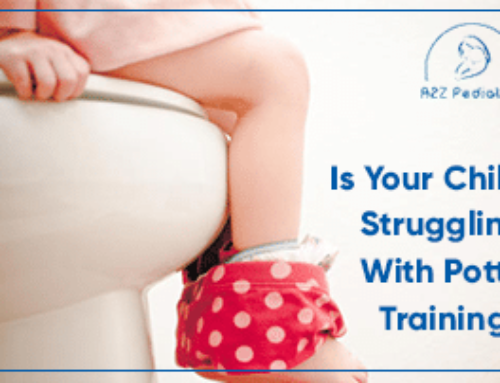Everything You Need To Know About ‘Lazy’ Eye
A lazy eye is also known as amblyopia. It is basically when the vision of one of your eyes doesn’t develop or progress the way it should have or is weaker than the other eye.
Although your weaker eye may “wander” in different directions, it does not necessarily look different, and the name “lazy” comes from this. The disorder will only impair one of your eyes in most cases, but in rare cases, it may impact both of your eyes.
According to pediatrics care plus,treatment is essential to treat amblyopia because your brain will slowly learn to ignore or pick up the image from the weaker eye. That could also result in a permanent vision problem.

What causes a lazy eye?
It usually develops when there’s a breakdown in how the brain and the eye function together. The brain cannot recognize the site or signal from the weaker eye. It’s called a lazy eye because of how differently both eyes work, one eye works better than the other, and the weaker ones start relying on, the stronger eye.
Amblyopia usually starts in childhood, and it’s one of the most common causes of vision loss in children.
Symptoms In Children With A Lazy Eye
Symptoms aren’t apparent at the start for children with lazy eyes. They usually have poor depth perception and trouble telling how near or far something is from them. Measuring length and distance is also trouble since their brain doesn’t support the weaker eye. Parents notice that the children are struggling to see. They squint, shut one eye, tilt their heads for a more precise/focused image, bump into objects on one specific side, and have double vision.
In majority of the cases, the parents are unable to diagnose or find out that their child has amblyopia. They come to know about it after an eye exam.
Therefore, children need to get a vision screening test at least once between three and five. If your child is around the same age, you may want to take him to a clinic nearby. You may follow the link and book an appointment with the Naperville il pediatrician fora better and healthy future for your child.
Children Who Are At Risk With A Lazy Eye
Many children are born with this condition, and others usually develop it later in childhood. The chances of amblyopia are much higher in babies born premature or smaller than average babies at Birth.
In other conditions where a child does not have amblyopia, but vision is weaker and ignored, it can lead to severe eye problems and even amblyopia at times. Some are as follows:
- Refractive errors:
Refractive errors include common vision problems such as having trouble seeing far away, seeing things close to you, and blurry vision. Ordinarily, such issues are treatable by a pair of glasses, but if you do not treat them on time, your brain may start to ignore the weaker eye and will ultimately rely on the stronger one.
- Strabismus:
Usually, when you move your eyes, both the eyes move as a pair, but the eye does not usually move together with children who have strabismus. They tend to move differently. The weaker eye usually moves in a different direction. It might drift up, down, in, or out.
- Cataract:
A cataract is basically when the lens of your eye has cloudiness. It makes your vision blurry. Most cataracts happen in people who are a bit older, babies and children also develop Cataracts, but it’s usually common in adults.
Besides these three main factors below are listed a few other conditions that may also be the reason for amblyopia:
- Diverse levels of vision in each of your eyes
- Eye damage due to a trauma
- Flabby eyelid
- Vitamin A deficiency
- Eye surgery that had weakened one eye
- Vision impairment, such as nearsightedness, farsightedness, or astigmatism
- Glaucoma
Treatment For A Lazy Eye:
At times amblyopia is caused by other visionary problems that need treatment first; for example, a doctor may want to check if your child’s vision gets any better by wearing glasses. Glasses are essential for children who are nearsighted or farsighted. Further on in the next step, they retrain the brain and force it to use the weaker eye instead of, the stronger one.
Treatment includes:
- Eyepatch for the stronger eye:
The doctors usually cover up the stronger eye with an eye patch, similar to a bandit. The brain is then dependent on using the weaker eye to see. Sometimes the child only needs to wear the patch for around 2 hours a day, whereas others may need to wear it all day.
- Blurry eye drops for the stronger eye:
A single drop of the called atropine is kept in use to temporarily blur out the near vision of the stronger eye for the brain to use the weaker eye. At times this treatment works way better than the eye patch, and some parents find it way easier because young children may try to pull off their eye patch.
- Surgery:
If your child is cross-eyed or eyes that point in contrary directions, the doctor may ask you to get surgery done on your child’s eye muscles.
It’s vital to distinguish between a lazy eye and a crossed or twisted eye. Strabismus is the medical term for this disorder. However, if a crossed-eye has more pressure than an uncrossed eye, strabismus can cause amblyopia.
It is important to treat amblyopia if not treated. It may result in a temporary or permanent loss of vision. It can result in a loss of depth perception and 3-D vision.
You may notice that your child is getting better and his vision is improving after a few days or weeks, but it will probably take months to get the best results. Your child may need to repeat these treatments with time to stop amblyopia from coming back. It is vital to start the treatment at your earliest if your child has been diagnosed with amblyopia to avoid lifelong visionary problems since treatment is much more effective in children than adults.

A2Z Pediatrics
550 E Boughton Rd #110
Bolingbrook, IL 60440
Email: info@azmedpeds.com
Phone: 630-755-5437
Website: https://azmedpeds.com/




